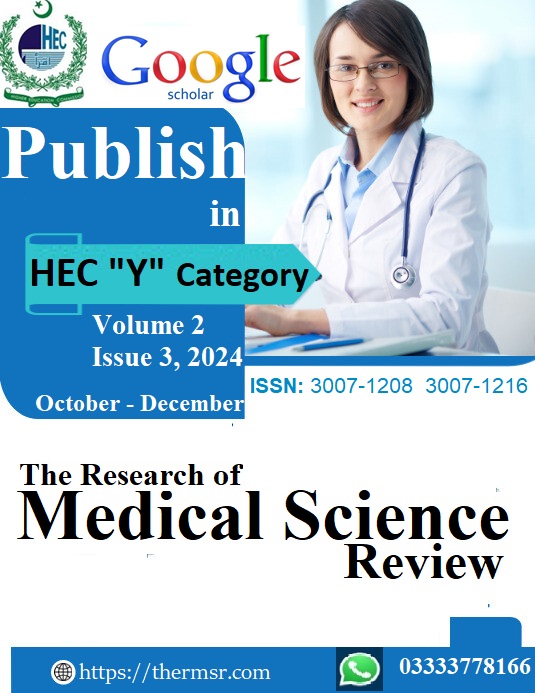URDU TRANSLATION AND STRUCTURAL VALIDATION OF THE DEPRESSIVE COGNITION SCALE IN CLINICAL POPULATION
Keywords:
Depressive Cognition Scale, confirmatory factor analysis, convergent validity, divergent validityAbstract
Objectives: The present study aimed to translate and further validate the Depressive Cognition Scale’s factor structure for the clinical population.
Background: The Depressive Cognition Scale is a commonly employed instrument to determine depressive thoughts, resulting in clinical depression.
Methodology: This study is comprised of two phases. During the first phase, the DCS scale was translated using the standard International Testing Commission (ITC, 2019) procedures, comprising committee evaluation, forward and backward translation, and pilot testing. The study's second phase was carried out to validate the translated version. For this purpose, a sample of 30 participants was selected for cross-language validation to ensure the accuracy and cultural relevance of the translation. For the scale’s structural validation, the sample consisted of 300 participants aged 19–60 years (Mage = 39.5, SD = 11.83) who were selected through a purposive sampling strategy. The participants were recruited from a hospital setting, ensuring a clinically relevant sample to validate the scale.
Results: The final model of DCS was retained with eight factors since the CFA results fit the data well. Additionally, results indicated that the convergent and divergent validity for DCS were higher than the equivalent squared correlation. The findings suggest that the DCS may effectively assess depressive thoughts before the onset of clinical depression.
Downloads
Downloads
Published
Issue
Section
License

This work is licensed under a Creative Commons Attribution-NonCommercial-NoDerivatives 4.0 International License.














